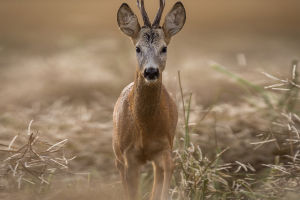Have you ever wondered what makes the cheetah the fastest land animal? We’re diving deep into the secrets of its incredible speed, physical traits, and survival mechanisms.
From its lightning-fast sprint to the evolutionary advantages that allow it to outrun predators, the cheetah is a true marvel of nature. Let’s explore the different subspecies, physical characteristics, and adaptations that make the cheetah the speed machine it is today.
Subspecies of Cheetahs
There are four main subspecies of cheetahs, each with distinct characteristics and distribution. Most of them are currently classified as vulnerable or endangered.
1. South African Cheetah (A. j. jubatus): Found in Southern Africa, including countries like Namibia, South Africa, Zimbabwe, and Botswana. This is the most common subspecies, with an estimated population of 1,800 in Botswana and around 550-850 individuals in South Africa.
2. Sudanese Cheetah (A. j. soemmeringii): Found in central and northeastern Africa, including countries such as Ethiopia, Egypt, Sudan, and parts of Cameroon and Nigeria. This subspecies is the second-largest, with an estimated 2,000 individuals in the wild.
3. Northwest African Cheetah (A. j. hecki): Found in North Africa, including countries like Morocco, Algeria, and Tunisia. It is one of the most critically endangered subspecies, with only 250 mature individuals left.
4. Asian Cheetah (A. j. venaticus): Also known as the or Indian cheetah, it is the rarest subspecies and is only found in the arid regions of Western Asia. With fewer than 70 individuals left in the wild, it is considered one of the most endangered animals globally.
Physical Traits of the Cheetah
Cheetahs have a distinct body structure designed for high-speed chases. They have a slender yet muscular body, with a broad chest and narrow waist. Their small head, short muzzle, and large eyes contribute to their superior vision, ideal for spotting prey from a distance. Cheetahs have oversized nasal passages to ensure they get enough oxygen while running at top speed.
Adult male cheetahs typically weigh between 29 to 65 kg, while females are slightly lighter at 21 to 63 kg. Their body length ranges from 112 to 135 cm, with tails that can be as long as 84 cm. The cheetah’s coat is covered with solid black spots, which are different from the rosette patterns seen on leopards. The underside of the cheetah’s body is white, while its tail has distinctive dark rings.
The Cheetah's Speed Capabilities
What truly sets the cheetah apart is its ability to run at incredible speeds. Cheetahs can reach speeds of over 120 km/h (75 mph), which is more than three times the speed of a human sprinter. A cheetah’s acceleration is so impressive that it can go from 0 to 60 mph in just a few seconds—faster than most cars!
In fact, the world’s fastest cheetah, named Sarah, set a record at the Cincinnati Zoo in 2012 by running 100 meters in just 5.95 seconds. This is faster than Usain Bolt, the world record holder for the 100 meters. Cheetahs can only sustain these speeds for short distances of 350 to 550 meters, after which they risk overheating.
The cheetah’s body is built to maximize its speed. It has an extremely flexible spine, long and muscular legs, and a large tail that helps it balance during high-speed turns. Its non-retractable claws dig into the ground for better traction, and its hard footpads help it make quick, sharp turns while chasing prey.
How the Cheetah Hunts
Despite its incredible speed, the cheetah is not known for being a dominant fighter. Instead, it relies on speed to chase down and capture its prey. It often uses a burst of speed to close the gap between itself and its target, using its sharp vision to keep the prey in sight.
Cheetahs typically hunt smaller ungulates such as gazelles and impalas, and they rely on their stamina to maintain speed during the chase. The cheetah’s slender build and specialized muscles allow it to accelerate quickly and maintain high speeds for brief periods, but it cannot fight off larger predators like lions or hyenas. In fact, after a successful hunt, cheetahs often have to protect their prey from these larger animals.
Cheetah Cubs and Their Early Development
Cheetah cubs are born with a soft, dark-colored coat that helps them blend in with their surroundings. This thick fur also provides camouflage, making it harder for predators to spot them. As the cubs grow, their fur gradually changes, and they start developing the characteristic spots. Around the third month, the cubs begin to lose their thick fur, but some may retain it until they are up to two years old. This phase is crucial for their survival, as it allows them to avoid predators and become more agile for future hunts.
Final Thoughts
The cheetah is truly a marvel of nature, with its unmatched speed, specialized body structure, and evolutionary traits that make it a standout predator. Despite these amazing features, cheetah populations are facing serious threats, and many subspecies are listed as vulnerable or endangered. By learning more about their biology and understanding what makes them so unique, we can appreciate these incredible animals even more and take meaningful actions to ensure their protection.
The next time you encounter a cheetah, keep in mind: it’s more than just the fastest animal on land; it’s a symbol of nature’s brilliance! Let’s keep supporting conservation efforts to protect these majestic creatures for future generations to admire.
Cheetahs 101 | Nat Geo Wild
Video by Nat Geo Animals


